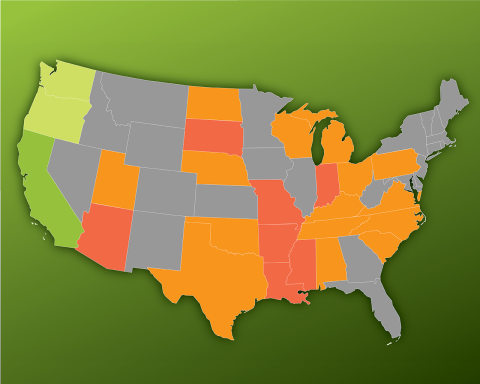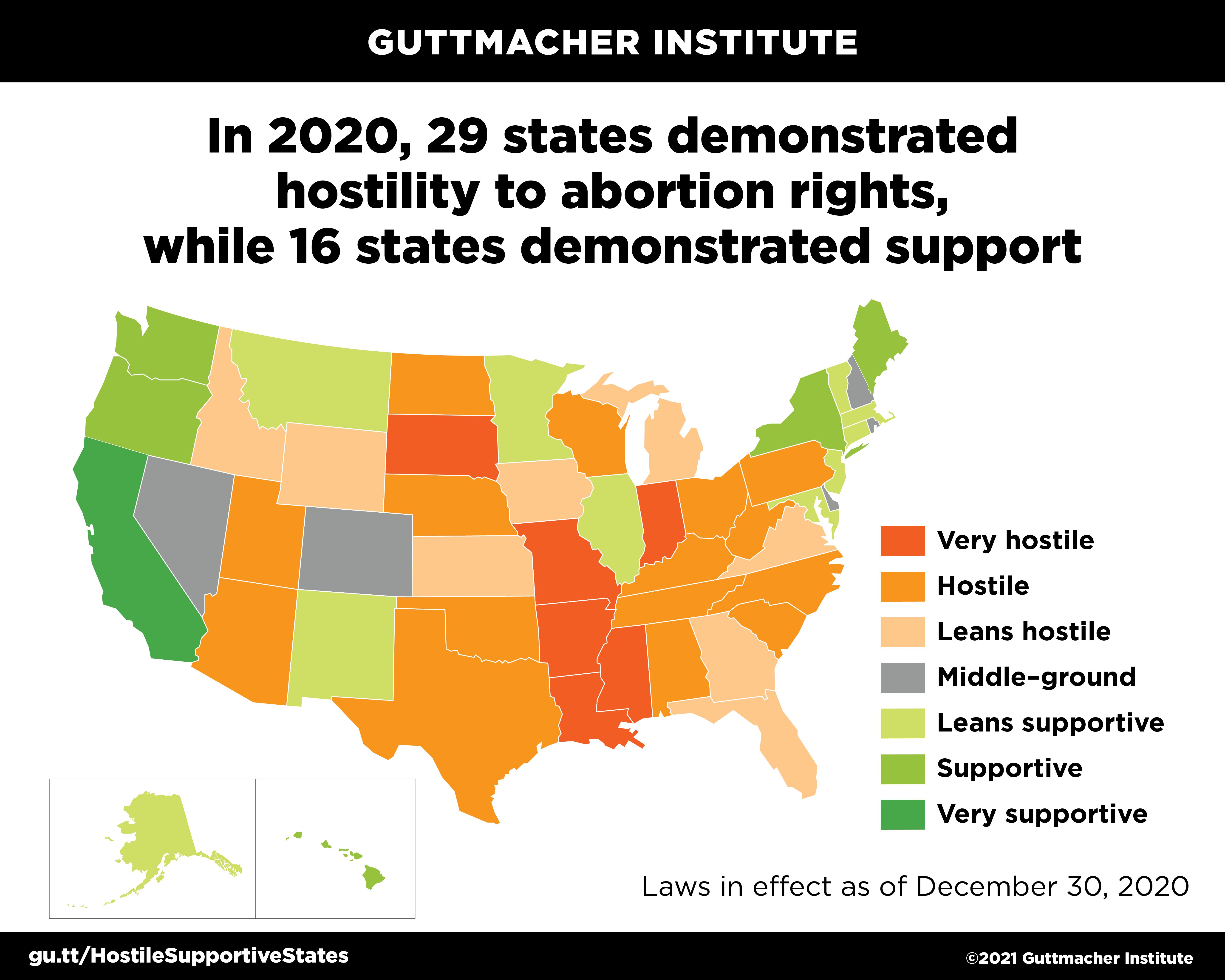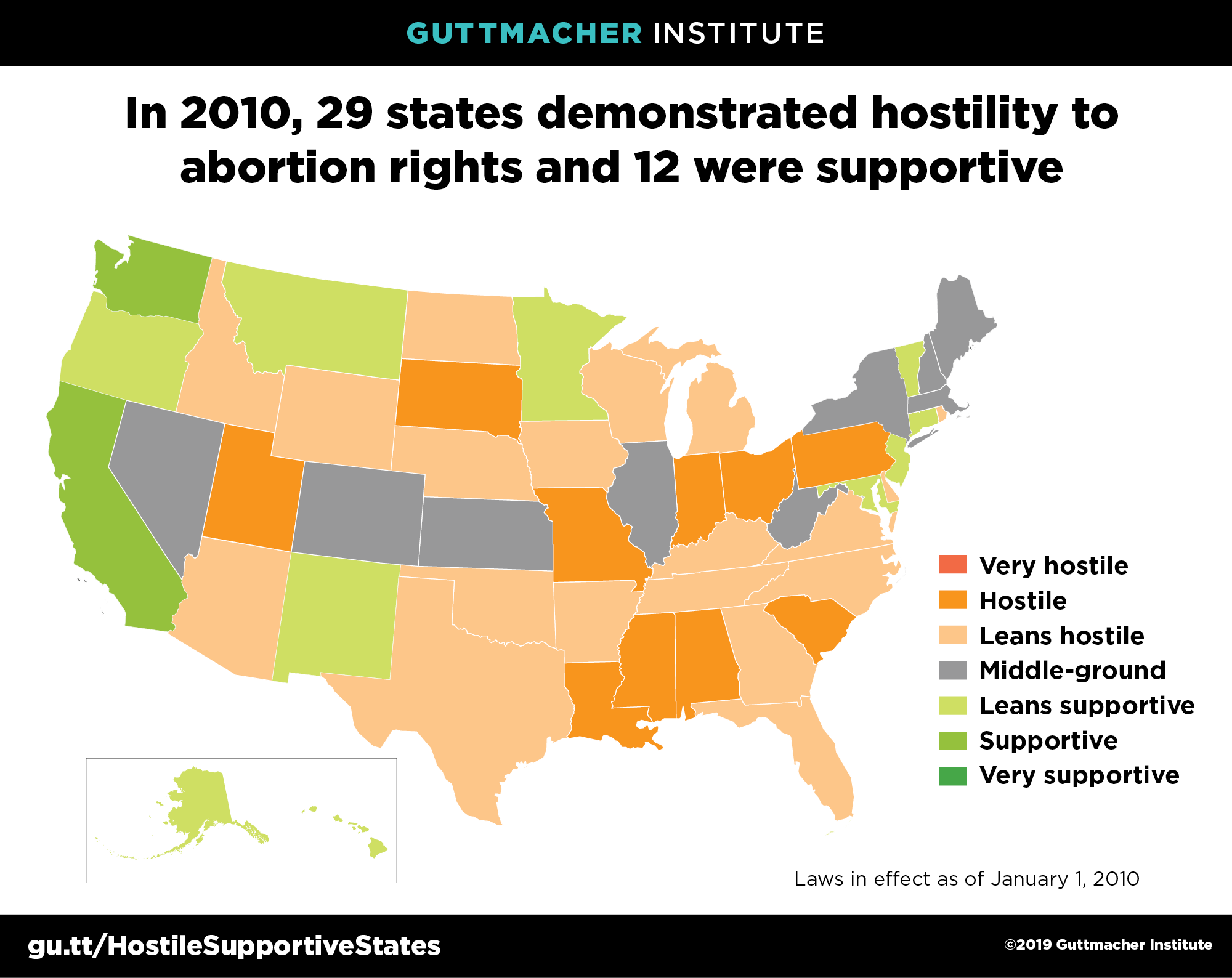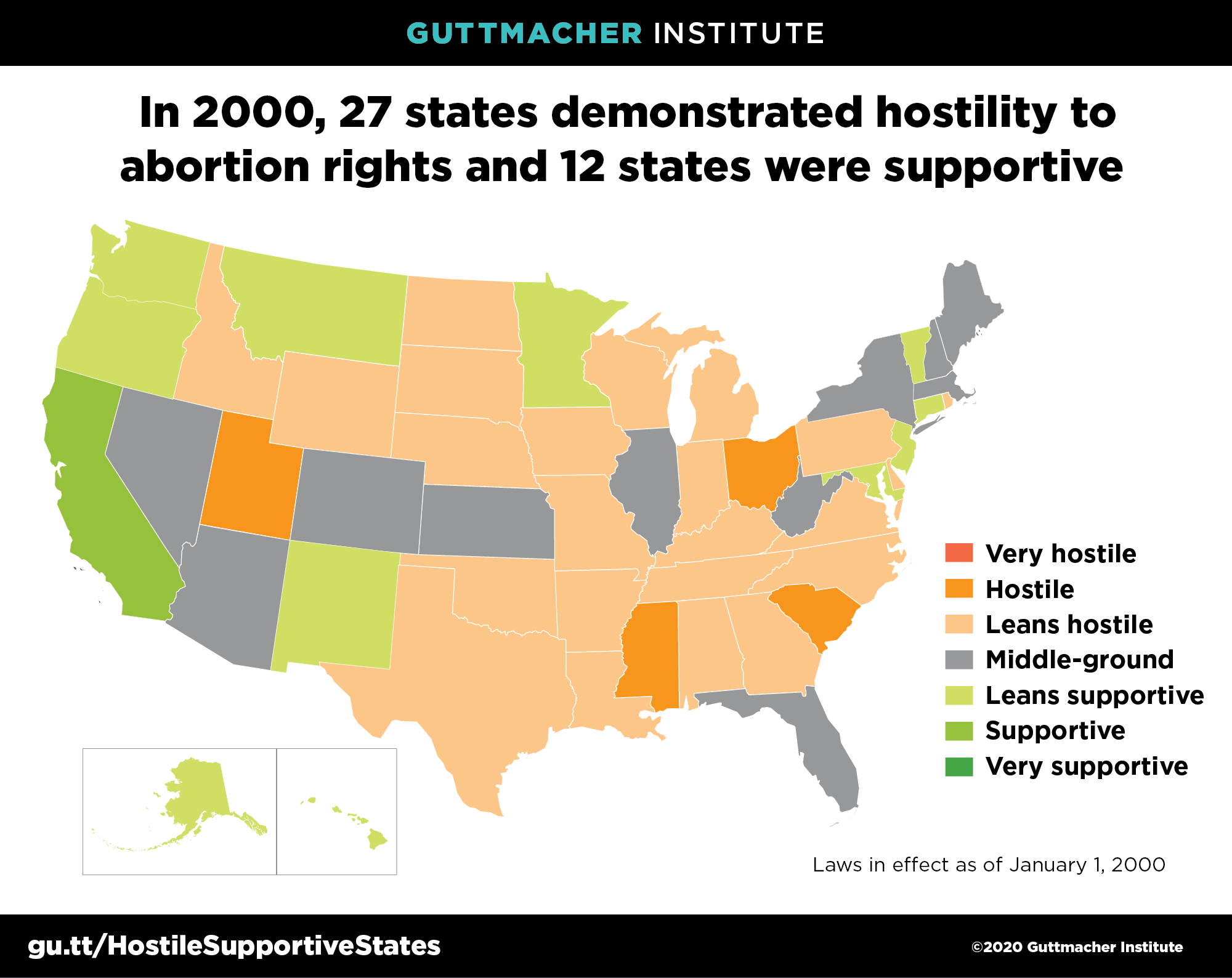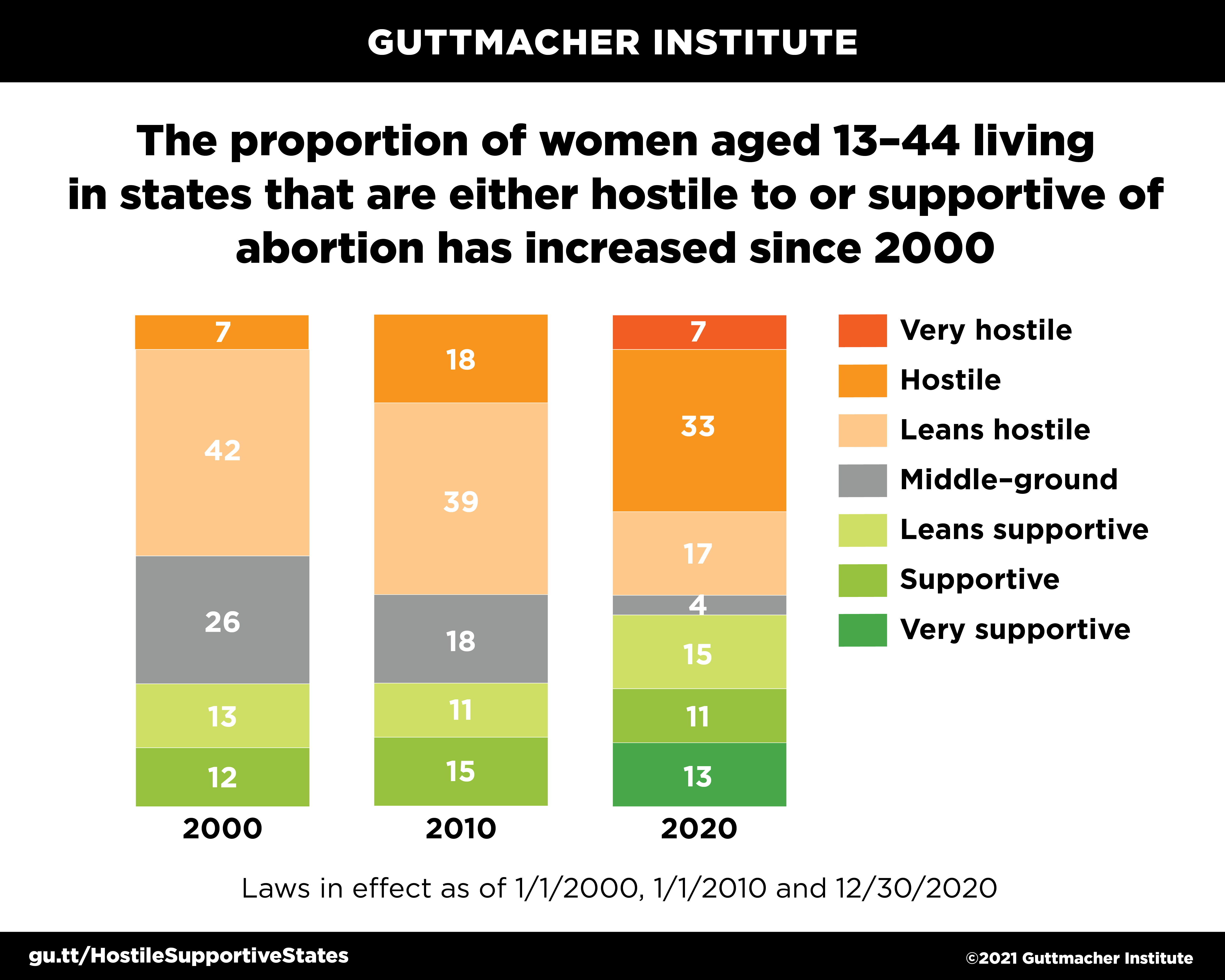Hostile and Supportive States
- 6 states are very hostile
- 15 states are hostile
- 8 states lean hostile
- 5 states are middle-ground
- 10 states lean supportive
- 5 states are supportive
- 1 state is very supportive
This policy landscape has changed over time. In 2010:
- No states were very hostile
- 10 states were hostile
- 19 states leaned hostile
- 9 states were middle-ground
- 10 states leaned supportive
- 2 states were supportive
- No state was very supportive
And in 2000:
- No states were very hostile
- 4 states were hostile
- 23 states leaned hostile
- 11 states were middle-ground
- 11 states leaned supportive
- 1 state was supportive
- No state was very supportive
U.S. Women of Reproductive Age (aged 13–44)
- Currently, nearly 40 million U.S. women of reproductive age (58% of the total number) live in states that have demonstrated hostility to abortion rights.
- In contrast, 25.8 million women of reproductive age (almost 38% of the total) live in states that have demonstrated support for abortion rights.
- 2.5 million women of reproductive age (nearly 4% of the total) live in middle-ground states.
As the policy landscape has shifted, so has the number of women living in different classifications of states.
In 2010:
- Nearly 38 million U.S. women of reproductive age (57% of the total number) lived in hostile states.
- Nearly 17 million women of reproductive age (25% of the total) lived in states considered to be supportive of abortion rights and access.
- More than 11 million U.S. women of reproductive age (greater than 17% of the total) lived in middle-ground states.
In 2000:
- Nearly 32 million U.S. women of reproductive age (49% of the total number) lived in hostile states.
- More than 16 million women of reproductive age (25% of the total) lived in states considered to be supportive of abortion rights and access.
- Nearly 17 million women of reproductive age (26% of the total) lived in middle-ground states.
Methodological Notes
Data on U.S. women aged 13–44 are from the American Community Survey. States were scored based on whether they had policies in effect in any of six categories of abortion restrictions and any of six categories of measures that protect or expand abortion rights and access. Policies were not counted as in effect if they were blocked by court order (temporarily or permanently), or if the effective date had not yet been reached. (Until 2018, Guttmacher Institute analyses of the state abortion policy landscape included only abortion restrictions and considered 10 categories of restrictions. The six current categories consolidated some issue areas and scores cannot be directly compared with previous analyses.) Each state was given a score of 1 for every protective measure in effect and a score of -1 for every abortion restriction in effect. A state with a score of either positive or negative six has either all of the abortion restrictions or all of the protective measures in effect. A state with a score of -5, for example, has either five restrictions and no protective measures or a combination of six restrictions and one protective measure.
A state is considered very hostile to abortion rights if it has all six abortion restrictions in effect. A state is considered hostile to abortion rights if it has a score of -4 or -5. A state is considered to be leaning hostile to abortion rights if it has a score of -2 or -3.
A state is considered very supportive if it has all six types of measures that expand or protect abortion rights and access in effect. It is considered supportive if it has a score of 4 or 5. A state is considered to be leaning supportive if it has a score of 2 or 3.
States scoring between 1 and -1 are considered middle-ground.
Six abortion restrictions:
- Ban pre- or postviability abortions in violation of constitutional protections
- Require in-person abortion counseling followed by a waiting period before the procedure (thereby requiring at least two trips to the facility)
- Restrict Medicaid coverage for abortion
- Prohibit the use of telemedicine to provide medication abortion
- Limit access to abortion for those younger than 18 without parental involvement
- Impose unnecessary and onerous abortion clinic regulations
Six protective policies:
- Affirm a right to abortion in the state constitution
- Establish a legal standard that protects access to abortion
- Guarantee abortion coverage through Medicaid
- Allow advanced practice clinicians to provide abortion by law or Attorney General Opinion
- Mandate private health insurance plans cover abortion
- Protect access to abortion clinics
See here for a spreadsheet detailing policies in effect for each state.

